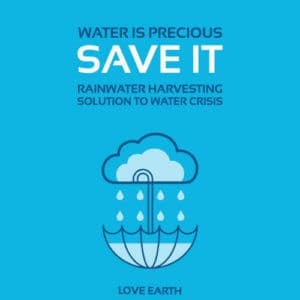Blog
Healthcare’s Water Conservation Efforts Have Ripple Effect

Water conservation is on everyone’s mind these days as water prices climb, regulations change and weather patterns are becoming less predictable. California and Nevada suffered one of the worst droughts in history while other parts of the US are suffering from horrendous out-of-season floods.
The following article is a re-post written by Anne DiNardo, Senior Editor of Healthcare Design Magazine. DiNaro is a key leader in the design industry and often writes about the developments that are moving the healthcare industry forward.
The article explains how the healthcare industry is making advances to conserving water in order to combat rising water and sewage rates, stay on top of changing regulations, and rebound from the increasing occurrence of extreme weather conditions.
Reducing water consumption in a safe and responsible manner will help secure the future of the healthcare industry. Examples of implemented strategies include Seattle Children’s Hospital and Lucile Packard Children’s Hospital in Stanford.
Hospitals Make Strides to Reduce Water Consumption
Reducing energy consumption isn’t the only area where healthcare organizations and designers are making a positive environmental impact these days. In response to rising water and sewage rates, changing regulations, and the increasing occurrence of extreme weather conditions, more facilities are starting to look for ways to reduce their water consumption, as well.
Seattle Children’s Hospital Leads the Way and Saves Big $$$
 As part of its Major Institution Master Plan, Seattle Children’s Hospital set a goal to reduce water and energy use by 50 percent by 2030. “Seattle has some of the highest water/sewer costs in the U.S.,” says Colleen Groll, sustainability program manager at Seattle Children’s. “We need to future-proof our operations so we’re not burdened by soaring utility costs, and to fulfill our mission to children, we need to conserve energy and water for future generations.”
As part of its Major Institution Master Plan, Seattle Children’s Hospital set a goal to reduce water and energy use by 50 percent by 2030. “Seattle has some of the highest water/sewer costs in the U.S.,” says Colleen Groll, sustainability program manager at Seattle Children’s. “We need to future-proof our operations so we’re not burdened by soaring utility costs, and to fulfill our mission to children, we need to conserve energy and water for future generations.”
The facility’s strategies ranged from installing low-flow plumbing fixtures in older parts of campus to fixing a leak on its therapy pool. The combined efforts resulted in savings of more than 1 million gallons of water a year.
Lucille Packard Children’s Hospital Collects Rainwater to Irrigate Landscaping
 New regulations, such as one in New York that requires buildings to have a cistern on site to hold rainwater and slowly release it after a major storm, provide another opportunity to reduce consumption.
New regulations, such as one in New York that requires buildings to have a cistern on site to hold rainwater and slowly release it after a major storm, provide another opportunity to reduce consumption.
Says Glazer, “When the regulations change, that’s when slow-adopters start to shift and move.”
Other forward-thinking organizations are leading the way on new strategies, such as the Lucile Packard Children’s Hospital Stanford expansion in Palo Alto, Calif., which will collect not only rainwater but also condensate from air-handling units to irrigate all landscaping.
Jack Goode, director of support services for Lucille Packard Children’s, says one of the biggest challenges is saving water without compromising safety. ”Instead of focusing on areas we cannot control, we turned our attention to those we can such as irrigation and equipment selection,” he says.
Ripple Effect Begins
Efforts like those mentioned above are having a ripple effect across the sector as hospital water use is gradually declining, averaging 49 gallons per square foot per year compared with nearly 70 gallons a decade ago, according to “The 2015 Hospital Energy and Water Benchmarking Survey,” released by consulting firm Grumman/Butkus Associates (Evanston, Ill.).
It’s an important issue to address since hospitals are the most water-intensive facilities in the world with seven percent of the commercial and institutional use in the U.S., says Iqbal Mian, member engagement manager at Practice Greenhealth, a membership and networking organization that consults with companies on sustainable practices.
Seventy-five percent of a hospital’s water usage is for non-domestic uses, such as running the central utility plant, while 25 percent is for domestic water use, such as faucets, showers, and toilets, he says.
“That’s why when we look to reduction opportunities, we consider the 80/20 principle, which asks where are the largest sources (or ‘causes’) of water use that we can conserve,” Mian says. “Since non-domestic is the largest cause of water use in hospitals, it’s a good starting point.”
Breeze Glazer, senior associate and sustainable design leader and research knowledge manager at Perkins+Will (New York), says practices such as low-flow fixtures and using no potable water for landscape irrigation are becoming the baseline for many organizations.
“Nearly all of our projects in the last 5-6 years have achieved at least 20 percent potable water savings and many are achieving 30 percent or more just from specifying low-flow toilets and faucets,” he says.
Source: Anne DiNardo is senior editor of Healthcare Design. She can be reached at anne.dinardo@emeraldexpo.com. Read the article on HealthcareDesignMagazine.com







